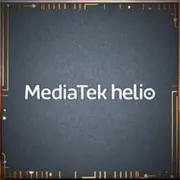MediaTek Helio P23

MediaTek Helio P23: A Budget Processor Focused on Energy Efficiency
Relevant as of April 2025
Introduction
MediaTek Helio P23 is a system-on-chip (SoC) released in 2017, still found in budget smartphones today. Despite its age, it remains popular due to its low cost and balanced performance. In this article, we will explore what makes the Helio P23 stand out in 2025, who it's suitable for, and what to consider when choosing a device based on it.
1. Architecture and Manufacturing Process: A Balance Between Power and Efficiency
The Helio P23 is built on a 16nm manufacturing process from TSMC, which is considered outdated in 2025 (modern chips use 5–7nm). However, this helps reduce manufacturing costs.
CPU: 8 Cortex-A53 Cores
The processor uses the ARM big.LITTLE architecture, but all cores are energy-efficient Cortex-A53. They are divided into two clusters:
- 4 cores at a frequency of 2.3 GHz for heavy tasks;
- 4 cores at a frequency of 1.65 GHz for background processes.
This approach ensures smooth operation in everyday scenarios but limits performance in resource-intensive applications.
GPU: Mali-G71 MP2
The Mali-G71 MP2 graphics accelerator with two compute units is somewhat weak for modern games. It supports resolutions up to Full HD+ (1080 × 2160) and APIs like Vulkan 1.0 and OpenGL ES 3.2.
Power Consumption (TDP 2.5W)
The low TDP (2.5W) is the main advantage of the chip. Even with active use, the smartphone does not overheat and maintains a battery life of 1–1.5 days.
2. Real-World Performance
Gaming
The Helio P23 can only handle less demanding titles:
- Candy Crush, Among Us — stable 60 FPS;
- PUBG Mobile — low settings, 25–30 FPS (with dips during combat);
- Modern AAA titles (e.g., Genshin Impact) — not recommended.
Multimedia
The chip supports:
- Recording video at 1080p@30 FPS;
- Playing back 2K videos (but without smooth scaling);
- Simultaneous operation of two cameras up to 13 MP.
AI Applications
The lack of a neural processing unit (NPU) limits AI capabilities. For example, object recognition scenes in Google Lens or photo processing in Adobe Lightroom take 20–30% longer than on chips with an NPU.
Power Consumption and Heating
Thanks to the 16nm manufacturing process and optimization in Android 13/14, smartphones with the Helio P23 rarely need to be charged more than once a day. The heating is moderate even with prolonged use (up to 42°C).
3. Built-in Modules: Modest, but Sufficient
- 4G LTE Cat.7 modem — speeds up to 300 Mbps for download and 100 Mbps for upload. 5G is not supported.
- Wi-Fi 5 (802.11ac) — works with routers up to 433 Mbps (5 GHz frequency).
- Bluetooth 4.2 — compatible with headphones and fitness trackers, but does not support advanced codecs like aptX HD.
- GPS, GLONASS — navigation works reliably, but without support for Galileo or BeiDou.
These modules are sufficient for basic tasks, but streaming 4K videos or online gaming with low ping may cause delays.
4. Comparison with Competitors
In 2025, the Helio P23 competes with ultra-budget chips:
- Snapdragon 625 — similar CPU performance, but Adreno 506 in SD625 is 15% faster than Mali-G71 MP2.
- Unisoc Tiger T610 — newer (2020), better optimized for Android 14, supports cameras up to 48 MP.
- MediaTek Helio G25 — a relevant 2023 alternative supporting HD+ screens and improved power efficiency.
Conclusion: The Helio P23 falls short against modern chips regarding GPU speed and camera capabilities but wins on price (devices from $150).
5. Use Cases: Who is Helio P23 For?
- Gaming — suitable only for casual games. For PUBG or CoD Mobile, it's better to choose a smartphone with Snapdragon 7 Gen 1.
- Daily Tasks — ideal for social media, messaging, and streaming video.
- Photography and Video — captures at 1080p, but detail and color reproduction lag behind chips with ISP support (e.g., Helio G85).
Examples of 2025 smartphones using Helio P23:
- Xiaomi Redmi 12C ($160) — 6.7" HD+, 5000 mAh;
- Realme C55 ($180) — 90 Hz screen, 64 GB of storage.
6. Advantages and Disadvantages
Advantages:
- Low device cost;
- Good battery life;
- Stable operation in basic scenarios.
Disadvantages:
- Weak GPU for gaming;
- No support for 5G and Wi-Fi 6;
- Limited shooting capabilities.
7. Practical Tips for Choosing a Smartphone
1. RAM Capacity — at least 4 GB to avoid lags in multitasking.
2. Display — choose models with HD+ resolution (720p), as Full HD+ may strain the GPU.
3. Battery — at least 5000 mAh for comfortable use.
4. Cooling — even a passive heatsink will extend the chip's lifespan.
Typical Devices: Budget smartphones up to $200, occasionally — educational tablets (e.g., Samsung Galaxy Tab A8 Lite).
8. Final Conclusion: Who is Helio P23 Suitable For?
This processor is an option for those who:
- Are looking for an affordable smartphone for calls, social media, and YouTube;
- Value battery life over high performance;
- Do not plan to use the smartphone for content creation or gaming.
Key Benefits: Low price, energy efficiency, adequate power for basic tasks.
Conclusion
Despite its age, the MediaTek Helio P23 remains sought after in the budget segment. If you need a reliable gadget for “a little bit of everything” without overspending, devices based on this SoC are worth considering. However, for gaming or multimedia work, it's better to look at more modern chips.
Basic
4x 2.3 GHz – Cortex-A53
GPU Specifications
Connectivity
Memory Specifications
Miscellaneous
Benchmarks
Compared to Other SoC
Share in social media
Or Link To Us
<a href="https://cputronic.com/en/soc/mediatek-helio-p23" target="_blank">MediaTek Helio P23</a>